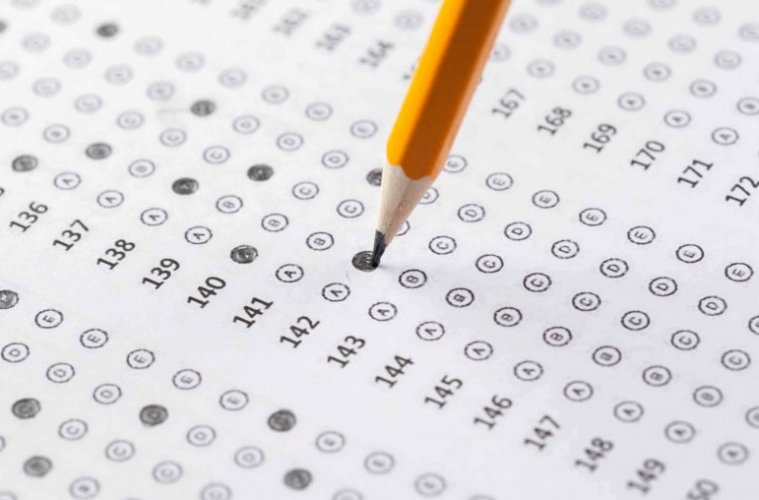Parenting(Age 5 to 8) | Academic | General | Parenting(Age 9 to 12) | Parenting(Age 13 to 16) | Nov 23, 2021
9 Helpful Strategies for Taking Tests

If you have not already, we suggest reading and familiarizing yourself with proven test preparation tips and strategies to help you improve your performance before diving into the test taking strategies below.
After you have a complete understanding of the subject matter and material that will be covered on your test, it is time to implement some basic test-taking strategies that have been proven successful for thousands of students. To give yourself the best chance of success, you must adapt your test-taking strategies to the type of test you will take.
- Make sure you're prepared
The importance of preparation cannot be overstated. Without adequate preparation, you may not be able to meet the requirements. Without reviewing before the test, you may not be able to meet the requirements. The most sophisticated test taking strategies will not be sufficient to save you if you do not know the material. You should prepare thoroughly before taking the test.
- Invest as much time as you need to master the material that will be covered on the test so that you can score well.
- In order to gauge student understanding of concepts, teachers usually slightly modify information on tests. Spend time honing testing skills
- Taking some time to relax will help you feel more confident.
- This will allow you to concentrate well on the test.
- Getting to the venue early might be a good idea so you can ask the instructor any last minute questions or listen to an explanation from someone else. It is suggested in some study resources that arriving early prevents "brain pickers" who ask questions immediately before tests, but we disagree. We think arriving a little early can help students prepare for the tests.
- It is not uncommon for instructors to make last-minute changes to the test details.
- Taking a test becomes more stressful when you do not read the instructions on how to take the test.
- Never be scared to ask the teacher to repeat test instructions if you missed them.
- When it comes to improving performance on certain types of tests, a memory dump can be particularly useful.
- You should begin writing down information as soon as you start the test, as you may forget information that you will need to know. Examples include dates, formulas, equations, lists, etc.
- Carefully read the test instructions and pay attention to details to be prepared to use your time wisely
- Often, directions and questions on tests contain useful information. Ensure you understand the instructions carefully by reading them thoroughly.
- In multiple choice questions, it is not uncommon to get two correct answers. Ensure you pay attention to the details.
- Students are often advised by test instructions that they only need to respond to two questions, but there are five options available.
- You should estimate how long each section of the test and/ or each question will take. Allow adequate time for more difficult sections or those that account for a significant percentage of your final test grade.
- Take the test at your own pace so you can finish it within the allotted time.
- You should answer all the questions you know first and then come back to the ones you are unsure of later.
- When two answers look the same, they are most likely incorrect.
- You should pay attention to how the question and the answer match up grammatically. A response that seems correct, but does not match the question grammatically, is probably not the correct answer.
- Consider the answers to other questions as well.
In the end, answering all the questions is important, even if you are running out of time. If you can show your work or partially complete questions, many professors will give you partial credit. Occasionally, college tests penalize students for guessing incorrectly. This is rare; the instructor usually announces it before the test.
- You do not need to lose confidence or waste time when you encounter confusing or difficult questions. Try answering the ones you already know the answer to first.
- Even if you do not know the correct answer, if it will not affect your score, make an educated guess.
- Don't take patterns into consideration. When a string of correct multiple choice answers is all "a", it is most likely a coincidence.
- When faced with a multiple choice question, the first answer that comes to mind is usually the best answer. Only change your answers if you are sure the answer you selected is incorrect.
- When you are struggling to get through a test, reviewing answers and making changes may not be helpful.
- If you have difficulty answering an easy question, return to it later.
- Check the essay for spelling and grammatical errors if you are required to write one.
- Be sure the entire test has been completed. On the opposite side of the page, it is not unusual for questions to be listed.
- Developing effective test-taking skills takes time and practice.
- Whenever you take a test, evaluate your performance afterward in order to determine if your test-taking strategies are effective.
- Pay attention to the places where you struggle. Do you find it challenging to write essays or to answer multiple choice questions?
- Identify what you can do to improve low scores by meeting with teachers. Meeting with teachers is highly recommended if you have difficulty answering essay questions.















Post a Comment: